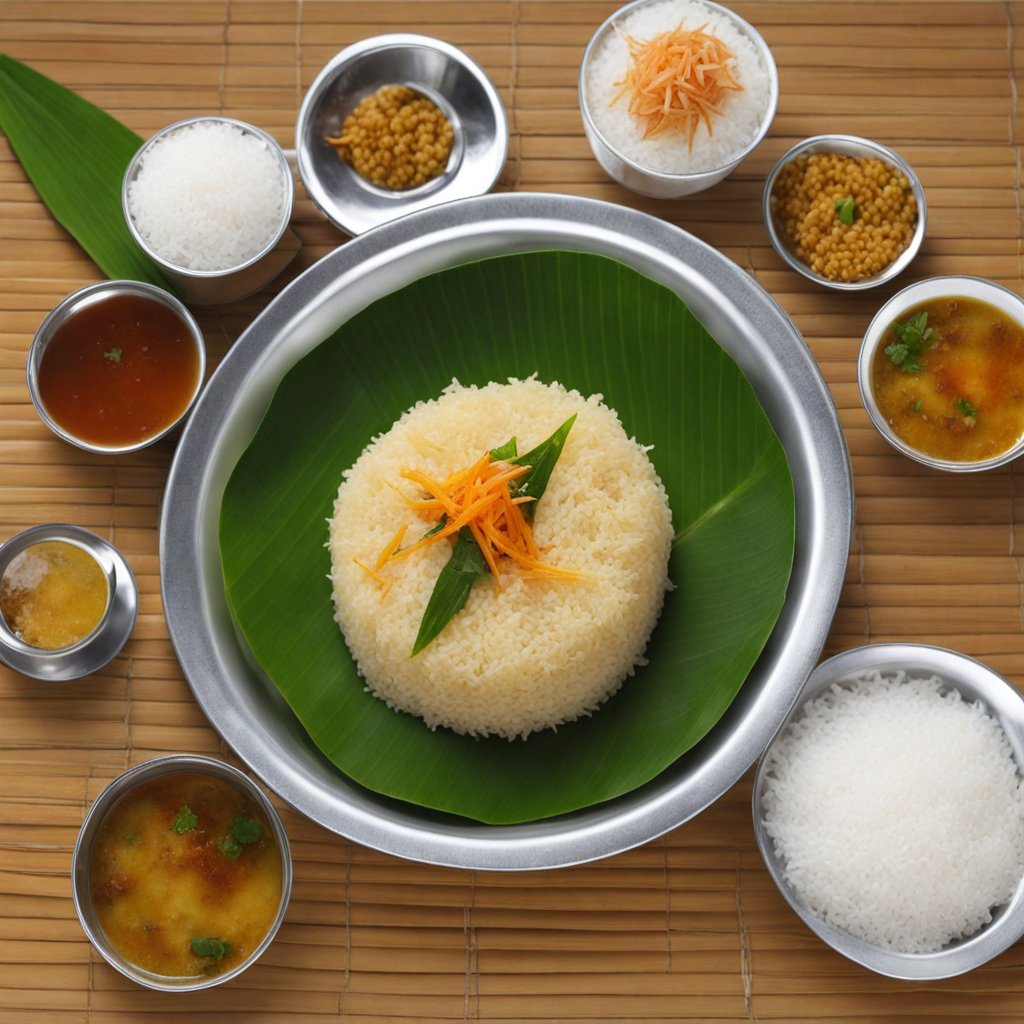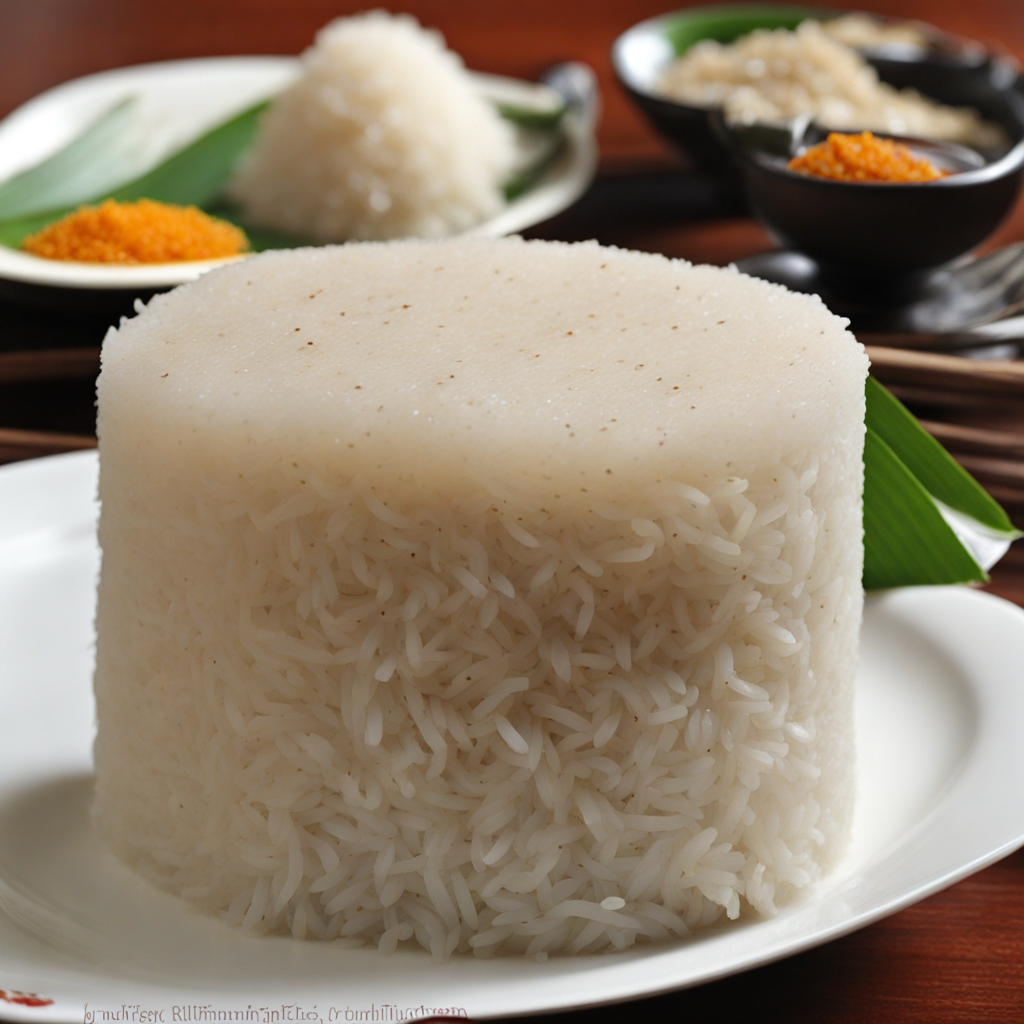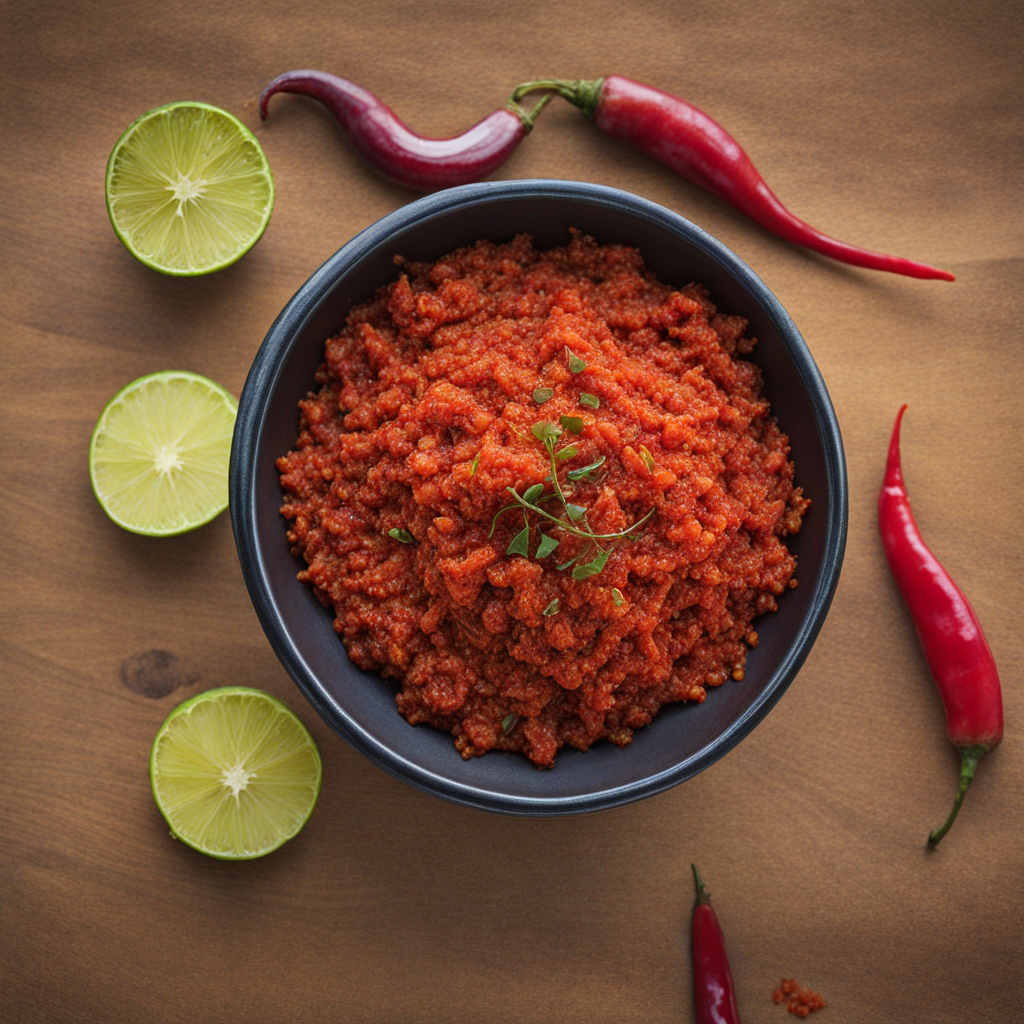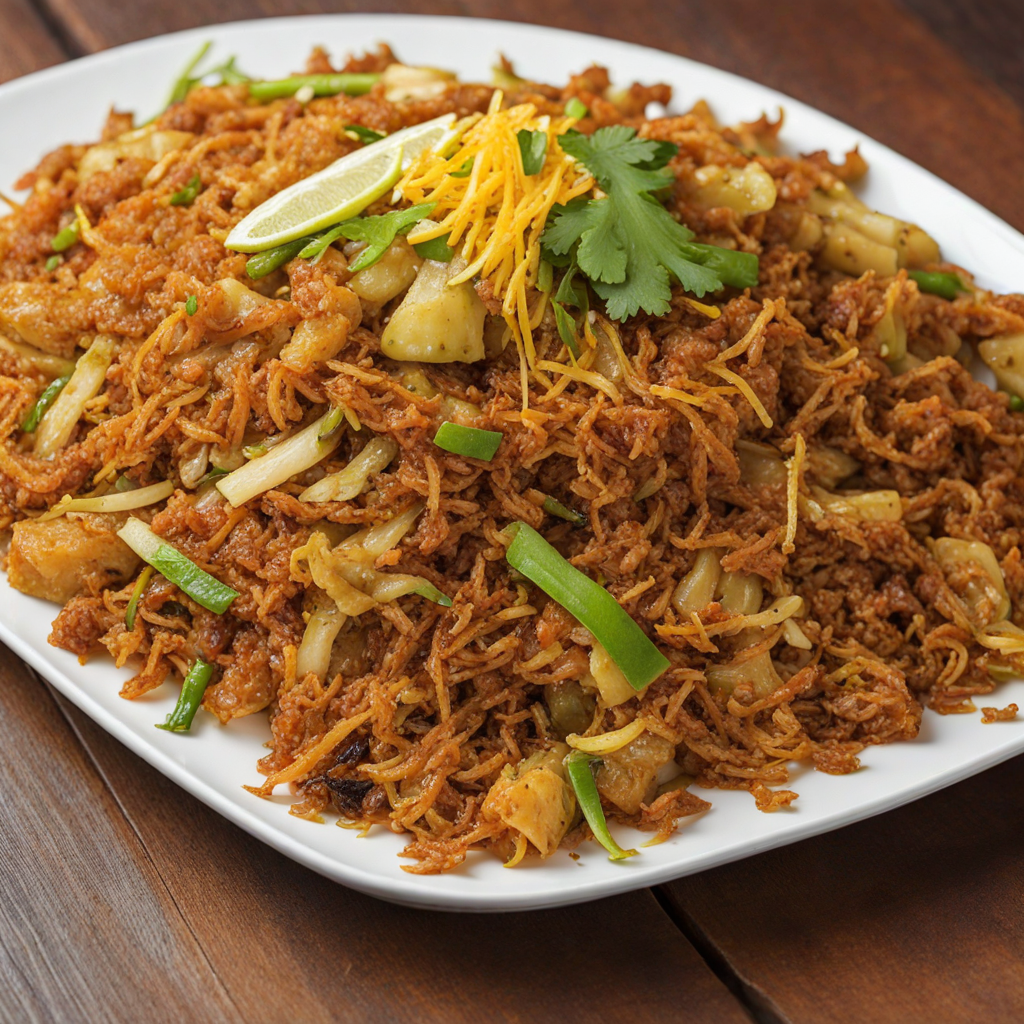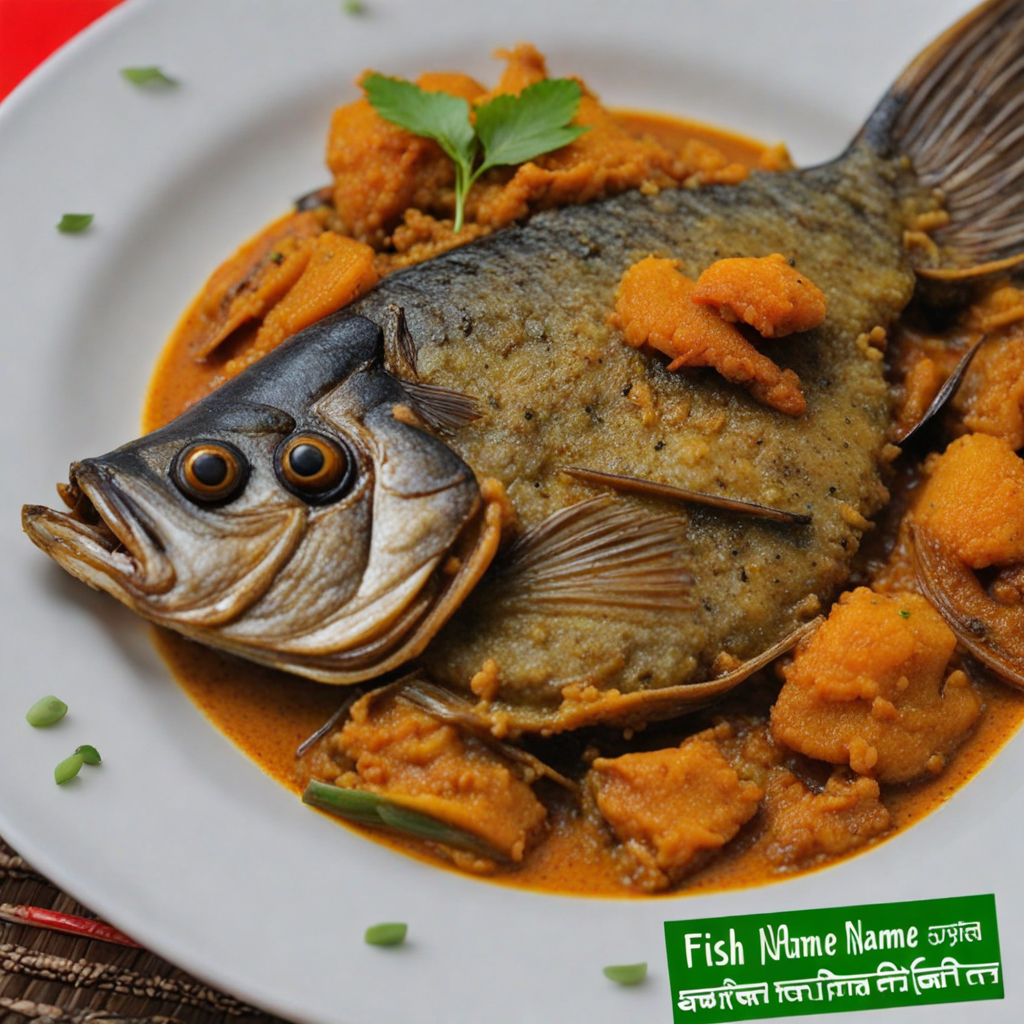Pittu
Pittu is a traditional Sri Lankan dish that captivates the palate with its unique blend of flavors and textures. This delightful food consists of a mixture of rice flour and grated coconut, layered and steamed in a cylindrical mold, usually made from bamboo or metal. The result is a soft, cylindrical cake that is both fluffy and moist, with a subtle sweetness from the coconut that beautifully complements the earthy notes of the rice flour. The process of steaming allows the ingredients to meld together, creating a harmonious balance of taste that is both comforting and satisfying. Often enjoyed as a breakfast or snack, Pittu is typically served with a variety of accompaniments that enhance its flavor profile. Common side dishes include coconut milk, spicy sambol, or savory curries, which provide a rich contrast to the mildness of the Pittu. The coconut milk adds a creamy texture, while the sambol introduces a kick of heat, making each bite an explosion of flavors. This versatility in pairing makes Pittu a beloved staple in Sri Lankan households, where it is often shared among family and friends during gatherings. Pittu's cultural significance extends beyond its taste; it is a dish that embodies the warmth of Sri Lankan hospitality. Often prepared during festive occasions or family celebrations, it showcases the importance of communal eating and the joy of sharing food. As you indulge in this delightful dish, you not only experience a unique taste of Sri Lanka but also a sense of connection to its rich culinary heritage. Exploring Pittu opens up a world of flavors that are deeply rooted in tradition, inviting you to savor a truly authentic and memorable experience.
How It Became This Dish
The History of Pittu: A Culinary Treasure from Sri Lanka Pittu, a beloved dish from Sri Lanka, is a culinary gem that not only tantalizes taste buds but also encapsulates the island's rich cultural heritage and diverse influences. Its origins, preparation methods, and the communal spirit surrounding its consumption weave a narrative that reflects the ethos of Sri Lankan society. #### Origins of Pittu Pittu, pronounced as "pittu" or "pittu," derives its name from the Sinhalese word "pittu," which means "to pound." This name is a nod to the traditional preparation method involving the pounding of rice flour and grated coconut. The dish is believed to have originated in the western coastal regions of Sri Lanka, where rice has been a staple food for centuries. Archaeological evidence shows that rice cultivation in Sri Lanka dates back over 2,500 years, suggesting that the early inhabitants of the island developed various rice-based dishes, of which Pittu is a notable example. The core ingredients of Pittu—rice flour and coconut—reflect the agricultural practices and natural resources of the island. Rice, a fundamental part of the Sri Lankan diet, is often paired with coconut, which is integral to many Sri Lankan recipes. The use of coconut in Pittu not only enhances the flavor but also contributes to the dish's nutritional value, as coconut is rich in healthy fats and fiber. #### Cultural Significance Pittu holds a special place in Sri Lankan culture, often served during breakfast or as a light meal. It is particularly popular in Tamil households, especially in the Northern and Eastern provinces, where it is often accompanied by coconut milk, spicy sambol (a condiment made from ground chili and other ingredients), or curries, such as fish or lentil curry. The communal aspect of enjoying Pittu is significant; it is often shared among family members and friends, fostering a sense of togetherness. Moreover, Pittu is associated with certain festivals and special occasions. For instance, during the Sinhala and Tamil New Year, which typically falls in April, families prepare Pittu to celebrate the harvest and the arrival of the new year. The dish symbolizes prosperity and abundance, making it a fitting choice for such celebrations. #### Preparation and Variations The traditional method of preparing Pittu involves using a cylindrical mold, known as a "pittu kutty," which allows the mixture of rice flour and grated coconut to be steamed to perfection. The rice flour is mixed with water to form a dough and layered with coconut before being packed into the mold. Once filled, the mold is placed over boiling water, and the steam cooks the mixture, resulting in a soft, fluffy texture. While the classic preparation uses white rice flour, variations exist, including the use of red or brown rice flour, which adds different flavors and nutritional benefits. Regional variations also abound: in some areas, Pittu is filled with sweetened coconut and jaggery, creating a delightful contrast to the savory versions. In more urban settings, innovative interpretations have emerged, incorporating ingredients such as chocolate or fruit for a modern twist. #### Evolution Over Time As Sri Lanka has undergone historical changes—colonial rule, migration, and globalization—the culinary landscape has also evolved. The British colonial period introduced new cooking methods and ingredients, leading to a fusion of flavors in traditional dishes. While Pittu has maintained its core identity, it has also adapted to the changing tastes and preferences of Sri Lankans. In contemporary times, Pittu has gained popularity beyond its traditional roots. With the rise of tourism and interest in authentic Sri Lankan cuisine, many restaurants and hotels now feature Pittu on their menus, offering both traditional and innovative variations. This exposure has led to a renewed appreciation for the dish, both locally and internationally. Additionally, the growing emphasis on health and wellness has prompted many to explore the nutritional benefits of Pittu. Made primarily from rice and coconut, it is seen as a wholesome option, particularly when served with fresh vegetables and proteins. The versatility of Pittu allows it to be customized to cater to various dietary preferences, including vegan and gluten-free options. #### Pittu in the Modern Context In the modern culinary scene, Pittu is often celebrated in food festivals and cultural events, where chefs showcase their unique takes on this traditional dish. Social media has also played a significant role in popularizing Pittu, with food bloggers and enthusiasts sharing their recipes and experiences, thus introducing it to a wider audience. Moreover, the dish has found its way into the diaspora communities, where Sri Lankans living abroad prepare Pittu as a way to connect with their roots. This cultural exchange has not only preserved the traditional methods of preparation but has also encouraged the adaptation of Pittu to suit different palates. #### Conclusion Pittu is more than just a dish; it is a reflection of Sri Lanka's agricultural heritage, cultural practices, and communal values. Its journey through history—from its humble beginnings as a staple food of the island's early inhabitants to its modern-day iterations—shows the resilience and adaptability of culinary traditions. As it continues to evolve, Pittu remains a cherished part of Sri Lankan identity, embodying the flavors, stories, and communal spirit of the island's diverse populace. In every bite of Pittu, one can savor the legacy of a culture that values togetherness, celebration, and the simple joys of life. Whether enjoyed at a family gathering, a festive occasion, or as a comforting meal, Pittu will undoubtedly continue to hold a special place in the hearts and stomachs of Sri Lankans for generations to come.
You may like
Discover local flavors from Sri Lanka


